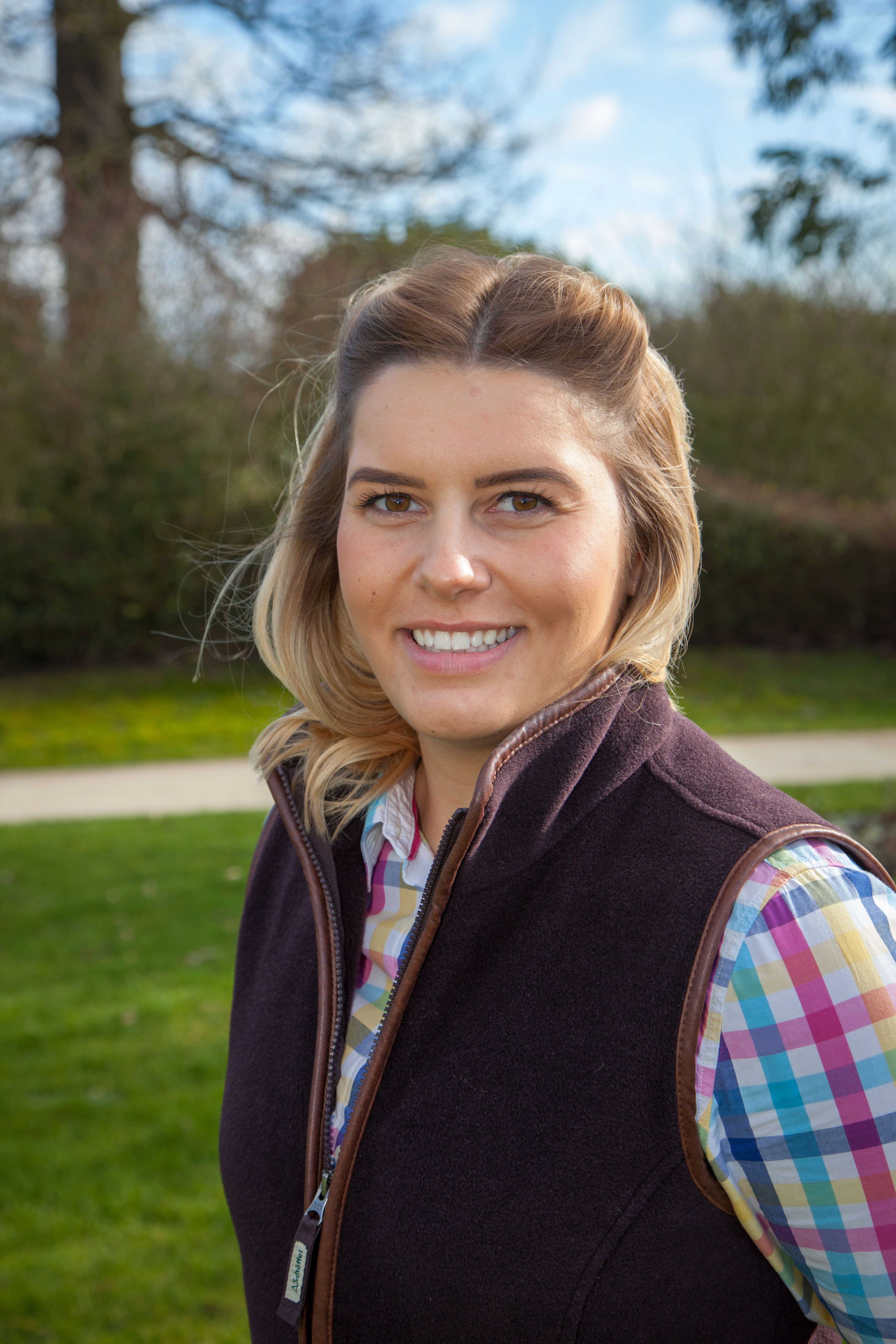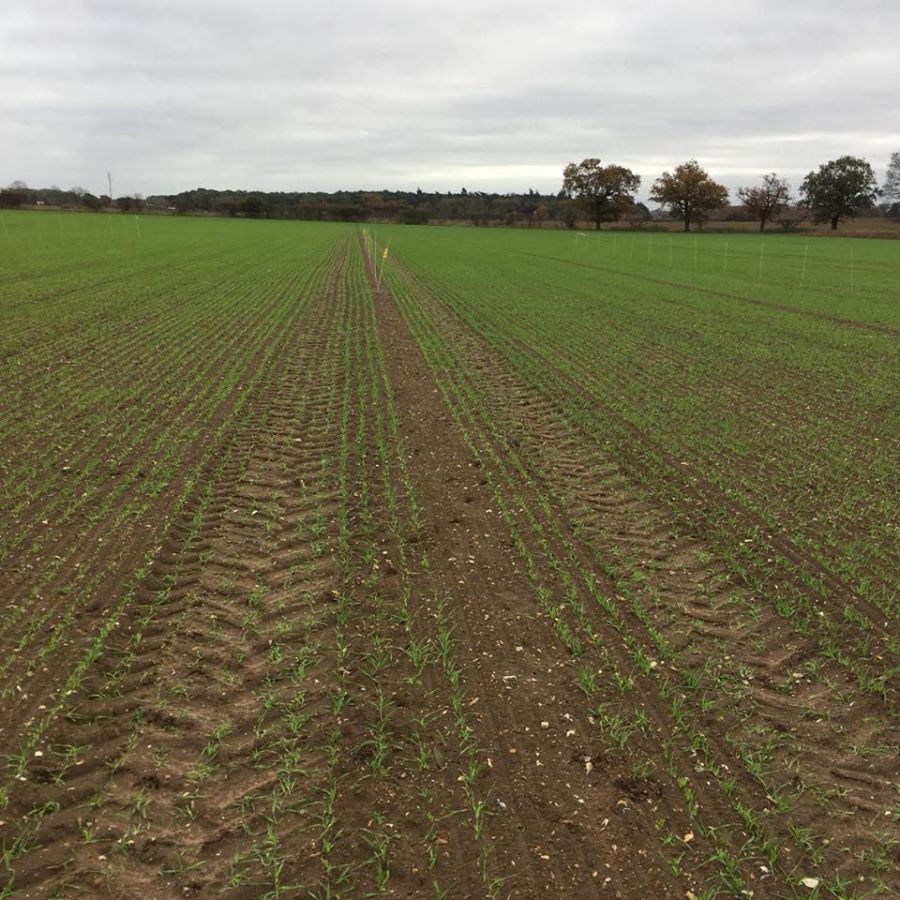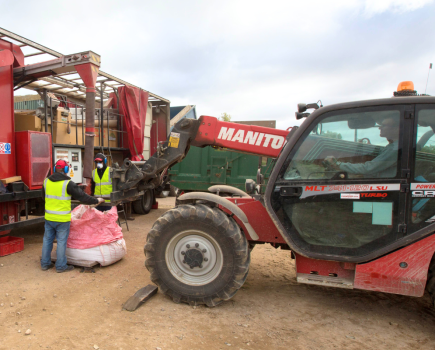Take-all is a well-known yield robber in second wheat crops but is frequently under reported in winter barley. However, recent trials undertaken by one agronomist have given unique insight into the management of the disease.
Elle Pace, agronomist at Hutchinsons, explains why take-all control in winter barley was the focus of her 2017 BASIS project.
“Barley is seen as a more cost-effective crop to grow because of the lower variable costs associated with its production, and its consistent yield as a second cereal,” she says.
“As barley has a bigger root system than wheat, there’s also a common misconception that it can naturally cope better with take-all infection.”
However, with recent commodity prices being lower, the need to reduce input costs is greater, which means that take-all control can sometimes be overlooked.
“Take-all can reduce both the yield and grain quality of barley, reducing bushel weight and causing spikey grains, as a result of compromised rooting leading to less nutrients and water being taken up by the crop.
“Therefore, as part of my project I wanted to run trials in winter barley to determine what inputs have the most effect on the crop in terms of health and nutrition, take-all incidence and severity as part of an integrated crop management approach,” she says.
The trial
The project compared the impact of single purpose seed dressing (SPD) and insecticide, (prothioconazole and clothianidin), versus specialist take-all seed treatment latitude (silthiofam) and prothiconazole. Nine other nutritional inputs and fungicides, including triple superphosphate (TSP) and azoxystrobin, nitrogen and a soluble liquid fertiliser, were also compared.
“The trial consisted of 20 plots in total, in soils following a first wheat where the presence of take-all is often higher.
“The plots were sub-soiled to help relieve compaction, reduce plant stress, and increase drainage. These were then ploughed, and the barley drilled in mid-October.
“Ten plots were planted with seed dressed with silthiofam and an SPD, and nine of these plots also received one of the other inputs.
“Another ten plots were planted with seed dressed with the SPD and insecticide alone, again with nine of these plots also receiving an additional input.”
Results
Elle explains that tiller and plant counts, and root weight readings were taken at the end of January and again at the end of March.
“Early findings of the trial indicated that the silthiofam plots had slightly reduced plant and tiller counts than the SPD plots.
“However, most noticeably, nutritional inputs had early effects on overall plant health, with peloton increasing tillers in the specialist take-all seed treatment plot, and azoxystrobin in the SPD plot.”
The trial ran for five months, with the concluding findings being collated in March 2017.

Elle Pace
Final results showed that the autumn TSP application on both the silthiofam and SPD plotsgave the highest number of tillers, averaging at 1,030 tillers/m2 and 1,110 tillers/m2 respectively.
The highest dry root weight was seen in the SPD plots in those treated with azoxystrobin, manganese, TSP and peloton, a multi-nutritional foliar feed, indicating that these treatments helped to enhance root development.
At harvest, in July 2017, six out of the ten silthiofam plots, which were also treated with a growth regulator, azoxystrobin (applied in the autumn), TSP and peloton, experienced a positive yield response compared to the SPD plots, ranging from between 0.46 t/ha to 1.53 t/ha.
“The plot treated with just the specialist take-all seed treatment and SPD, with no other inputs, showed a yield response of 0.73 t/ha,” says Elle.
Conclusion
“Although the trial ultimately showed no signs of take-all, the inputs demonstrated beneficial, indirect effects on the severity of the disease. Including the ability of the plant to tiller, green leaf area, green index area and root development,” she explains.
“In a take-all situation, an increased number of tillers could compensate for the loss of root area caused by the disease as the increased foliage above the surface would increase photosynthesis,” she says.
“This is particularly vital in malting barley where grain quality is important to meet end market requirements.
“Overall it was clear that the specialist seed treatment had the upper-hand on overall yield response, despite showing slower variable development through establishment.”
The important take home from this is to ensure that any programme for take-all control is robustly integrated and carefully planned, explains Tim Eaton, Key Account Manager at Certis.
“Although the disease is more common in second wheats, its occurrence in barley can often be overlooked, therefore leaving growers open to risk,” he says. “However, it’s important to ensure that the crop is robust enough to deal with the disease, should take-all occur.
“Elle’s results show a yield response of 0.73 t/ha for the plots using specialist seed treatment, Latitude, with no other inputs. This equates to a cost benefit of £79/ha when assuming a feed barley value of £145/t.
“Once take-all shows itself in crops it’s often too late to treat, but the above highlights that it’s not worth taking the risk.
“Ensuring seed rates are high enough to compensate for potential germination losses, and adequate amounts of Nitrogen are applied to help develop robust rooting, can all help to reduce the severity of take-all in winter barley,” says Tim.
“Hopefully this research will highlight the risk of take-all in barley as a second cereal, and the importance of implementing an integrated strategy that incorporates a number of tools in the armoury,” he says.
Trial facts
Aim: To measure the effects of seed dressing latitude and prothioconazole and clothianidin for take-all control in second cereal barley crops
Location: Ingham, Norfolk
Crop: Winter barley following a winter wheat
Cultivation:
- Sub-soiled to reduce compaction and aerate the soil
- Ploughed
- Drilled with a combination drill
Variety: KWS Orwell
Seed rate: 140 kg/ha
Drilling date: 14 October 2016
Harvest date: July 2017
Soil type: Sandy loam
Plots:
- 20 trial plots 12m x 12m
- 10 plots drilled with Latitude treated barley seed, 10 plots drilled with prothioconazole and clothianidin treated barley seed, plus:
- No additional inputs
- Peloton (Foliar feed), (Autumn application)
- Phorce (Phosphite), (Autumn application)
- TSP 108 kg/ha (Autumn application)
- Manganese (Autumn application)
- Azoxystrobin (Autumn application)
- Azoxystrobin (Autumn and spring application)
- Nitrogen (Autumn application)
- Growth regulator (Autumn and spring application)
- Growth regulator (Autumn application)
All plots received a standard farm application of herbicides for weed control.
Results
- Greatest yield – Latitude and azoxystrobin (Autumn application)
- Highest dry root weight – SPD and Peloton/ SPD and TSP
- Heaviest foliage – Latitude and Nitrogen (Autumn application)
- Highest tiller count – SPD and TSP
- Lowest disease pressure – Latitude and azoxystrobin (Autumn and spring application)/ SPD and Nitrogen
- Plant count – SPD and azoxystrobin (Autumn and spring application)




